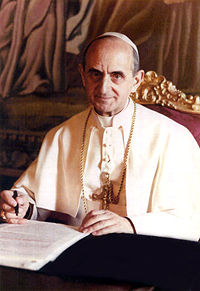
The Second “Week” of the Spiritual Exercises of St Ignatius Loyola begins with a prayerful reflection the call of a worthy earthly leader and my personal, enthusiastic response to that, followed by considering if an earthly leader elicits such a positive response, how do I respond to Jesus’ call to me?
This series of blog posts adapts the Spiritual Exercises for a pilgrimage (such as the Camino) and for other ways of growing spiritually following the insights of Ignatius.
Here are previous posts in this series – a good place to start:
How to Pray Like a Pilgrim – Camino Lessons from St Ignatius Loyola
Soul of my Saviour
Spiritual Exercises – 19th Annotation Pilgrimage
Pilgrim’s Purpose
Ignatius Four Week Pilgrimage of Prayer
Sin and Hell in the First Week of the Exercises
Application of the Senses
Draw me into your friendship – online edition of literal translation and contemporary reading (by David Fleming, S.J.) of the Spiritual Exercises of St Ignatius Loyola.
Sadly, the “evangelism” I see on the street (and online and elsewhere) starts from images of people famous for having done great good in their lives followed by everyone is destined to eternal hell fire, and the only way for any individual to be saved from this eternal torment is by accepting Jesus as their personal Lord and Saviour.
That is a common perception of what following Jesus amounts to.
Compare this to [my slight adaptation of] David Fleming’s contemporary reworking of the first part of “Christ the King and his call”:
I imagine a human leader, selected and raised up by God our Lord himself; every man, woman, and child of good will is drawn to listen to such a leader and is inspired to follow his call.
His address to all people rings out in words like these: “I want to overcome all diseases, all poverty, all ignorance, all oppression and slavery-in short, all the enemies of humanity. Whoever wishes to join me in this undertaking must be content with the same food, drink, clothing, and so on, as mine. So, too, you must work with me by day, and watch with me by night, that as you have had a share in the toil with me, afterwards you may share in the victory with me.” If a leader so attractive and inspiring and so much a man of God makes such a call, what kind of a person could refuse such an invitation?
How could anyone not want to be a part of so challenging and noble an adventure?
The call of Jesus is not about self-centeredly, individualistically focusing on pie in the sky when I die by and by! Jesus focused on justice, equality, community; on bringing God’s reign “on earth as it is in heaven”. Jesus calls us to join him in this vision and mission.
Appropriately, walking the Camino in Spain, Miguel de Cervantes’ Don Quixote presents someone who sees the world differently (as Jesus does). In Man of La Mancha, the musical adaptation of what is regarded as the first novel, Don Quixote sings the following in response to what he means by “following the quest”:
To dream the impossible dream
To fight the unbeatable foe
To bear with unbearable sorrow
To run where the brave dare not go
To right the unrightable wrong
To love pure and chaste from afar
To try when your arms are too weary
To reach the unreachable star
This is my quest
To follow that star
No matter how hopeless
No matter how far
To fight for the right
Without question or pause
To be willing to march into Hell
For a heavenly cause
And I know if I’ll only be true
To this glorious quest
That my heart will lie peaceful and calm
When I’m laid to my rest
And the world will be better for this
That one man, scorned and covered with scars
Still strove with his last ounce of courage
To reach the unreachable star
A biblical picture of Jesus’ vision and mission that he calls us to share in is presented well in Luke 4:18-19
The Spirit of the Lord is upon me,
because he has anointed me
to bring good news to the poor.
He has sent me to proclaim release to the captives
and recovery of sight to the blind,
to set free those who are oppressed,
to proclaim the year of the Lord’s favour.
Do follow
The Liturgy Facebook Page
The Liturgy Twitter Profile
The Liturgy Instagram
The Liturgy Bluesky Profile
and/or sign up to a not-too-often email


